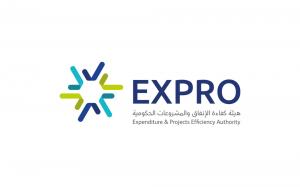It will serve as a comprehensive reference enhancing quality, efficiency, and sustainability in Saudi Arabia Government entities.
RIYADH, SAUDI ARABIA, June 5, 2024 /EINPresswire.com/ — The National Manual for Assets and Facilities Management (NMA&FM) represents a comprehensive reference that enhances quality, efficiency, and sustainability in the management of assets and facilities in Saudi government entities. This reflects the value of the citizens’ combined efforts to establish a unified reference in this field, which is considered the first of its kind on the national and regional levels.
The manual, which is prepared by the Government Expenditure & Projects Efficiency Authority “EXPRO” combined effort with success partners from the concerned government entities, aims to unify the different procedures for managing assets and public facilities, ensuring compliance with local legislation, and building asset management systems by registering and evaluating them to support optimal decision-making. The goal is to extend the life cycle of assets, manage public facilities effectively and efficiently based on the principle of cost and quality and relying on continuous improvement, and preserve resources by activating the concept of financial planning for asset and facility management and effective management of supply chains and contracts.
The manual serves as a technical reference for public entities on how to utilize each entity’s asset and facility management resources impeccably and manage them efficiently. It also covers the entire business life cycle of assets and facilities, starting with planning, constructing, and receiving the project, through contracting and purchasing stages, to operating and maintaining and ending with the decision to stop using and dispose of the facility or asset.
The implementation of this manual has documented success stories in various government entities, Including the Hygiene Performance Contracts transformation Initiative For Riyadh City in cooperation with Riyadh Region Municipality. This initiative resulted in the preparation and development of 16 integrated performance contract brochures for the hygiene of Riyadh city, with an estimated value of over 6 billion riyals, and the development of 11 performance indicators to improve service implementation and quality.
To increase operational efficiency and service quality at the Ministry of Environment, Water, and Agriculture, a system for facilities management was established according to best practices. This included automating assets and facilities management processes, creating an indicator board with over 10 indicators, and setting a standard for classifying dams based on urgency and risk levels according to the global best practices. Additionally, a complete asset registry for dams was built, and the computerized operations and maintenance system was activated.
The collaboration with the Ministry of Human Resources and Social Development led to an increase in operating efficiency and improvement in the quality of service by establishing a facilities management system based on best practices and automating five main and supportive processes for managing assets and facilities. This reduced operational and maintenance costs and increased beneficiary satisfaction rates.
Furthermore, the cooperation with King Saud University has improved operational efficiency and service quality. The university’s assets were counted and inventoried, the effectiveness of the computerized asset management program system was enhanced, and it was linked to other systems at the university in line with the requirements of the national manual. Additionally, an occupational health and safety policy was developed and approved, measurement indicators were identified, and seven procedures for operation and maintenance were implemented. These measures contributed to accelerating and facilitating the operation and field maintenance processes, as well as merging with inventory management to raise the efficiency of purchasing operations.
In addition, Imam Muhammad bin Saud Islamic University has succeeded in developing and launching a computerized system for managing assets and facilities. This system includes the operation automation and maintenance processes and ordering spare parts through computerised systems, increasing spending efficiency on annual operation and maintenance costs. It also accelerated service provision, monitored implementation, and provided data and technical and financial indicator panels to support decision-makers. This cooperation resulted in a qualitative leap in the satisfaction rate of users of university facilities, as well as the complete automation of the inventory and spare parts management process.
The Riyadh Region Municipality developed 13 integrated performance contract brochures for the operation and maintenance of Riyadh’s roads, with an estimated value of 2 billion riyals, and established nine performance indicators to measure the service performance, implementation, and quality.
EXPRO has made the manual available to its partners from public entities, their asset and facility departments, and specialized contractors and consulting offices via the website. EXPRO is committed to providing partners with all necessary knowledge for the manual’s application through a training package for each volume, on-the-job training, and experiential learning.
The manual consists of 17 volumes upon which the asset and facilities management methodology is based. Each volume addresses a specific function of asset and facilities management and takes into account the best global practices for accomplishing these functions. It is reviewed and updated periodically based on accumulated experiences and the contributions of a committee of government entities’ representatives, as well as global developments in the field of asset and facilities management.
The first volume includes an introduction to the manual, covering the calibres and guidelines necessary for management. The second volume is devoted to managing assets and the business requirements while achieving a balance between risks, performance and cost to ensure the proper use of assets. It also focuses on effectively monitoring assets during their life cycle to guarantee proper utilization, as well as relying on specialized asset management systems and software.
The third volume explains how assessment, as an organizational process, is useful in determining an asset’s condition and establishing an appropriate life cycle. This supports the proper direction of the asset and subsequent maintenance activities, ultimately achieving the required value.
The fourth volume includes guidelines for defining the financial policy framework, including planning the asset’s life cycle with regard to the necessary funding to maintain its operation at the required service level. It also covers the integration of strategic asset management with financial planning procedures, which helps in making decisions between investment and funding options and determining the achievable service level.
The fifth volume focuses on managing the processes of planning, organizing, and work control, as well as maximizing the use of resources to manage facilities and assets. This is based on written procedures that support the preservation of resources and limit any shortcomings or inconsistencies in the services provided, thus helping to avoid a negative impact on the entity’s reputation. It also emphasizes aspects that must be taken into account in future planning and development.
The sixth volume is concerned with managing maintenance by applying best practices to develop tools for planning maintenance and applying methodologies in their management. This contributes to determining the design life of the assets and the continuity of their services to maintain the safe and reliable operation of the assets. Additionally, it focuses on optimizing the benefits of its operational processes.
The seventh volume guides the procedures for adjusting the work and managing the requests related to maintenance activities. It prioritizes and plans these activities, fixes malfunctions, estimates costs, schedules work, and oversees testing and closure.
The supply chain management volume focuses on the strategic planning, implementation, control, and monitoring of supply chain activities, such as warehouse and inventory management. Effective supply chain management contributes to achieving optimal value and promotes competitive infrastructure as well as logistics services worldwide while measuring performance and linking supply to demand.
The Contract Management volume focuses on planning, implementing, managing and supplying asset and facility contracts that ensure legal compliance, meet required service levels, maximize financial and operational performance, and reduce potential risks.
The tenth volume focuses on safety, health, and the environment by providing a guideline to the procedures and controls relied upon to protect employees, visitors, public property, and the environment. It includes procedures for monitoring compliance, risk assessment, safety reviews, and safety training.
The eleventh volume presents the core pillars of quality management, which include monitoring daily work, conducting audits to measure the service provider’s compliance with its contractual obligations, and addressing inconsistencies. The effective application of quality management promotes strategies, policies, procedures, and plans.
The manual makers devoted a volume to managing risks and reducing the potential impact of events that may hinder the stakeholder or user from achieving asset and facilities management objectives, with the possibility of applying risk management to all comprehensive management procedures.
The thirteenth volume guides and directs users on the procedures and principles that must be applied to establish effective document management. Document and records management services are useful for obtaining, circulating and retrieving approved information when needed.
Volume Fourteen pays attention to emergency management, strategic organization of personnel, and allocation of resources to reduce the impact of emergencies and restore operations effectively.
The performance control volume explains the foundations of operating and managing operations and activities in accordance with the entity’s mission, vision, goals and requirements. This allows changes to be made when needed in order to maintain the consistency and effectiveness of performance to achieve the desired business objectives.
The asset and facility management of construction project volume identifies the procedures required during the construction stages to ensure the best results of operation and maintenance throughout the life cycle of the asset’s construction or restoration project.
The Energy Management and Sustainability Guideline outlines the optimal means for the strategic application of energy efficiency in buildings, in addition to sustainability, which represents an approach to integrating the environment, human needs, and costs.
EXPRO has recently launched the “Evolution of Tradition” awareness campaign to publicize the importance of the National Manual for Assets and Facilities Management. This includes a series of multimedia explaining the importance of following the manual’s guidelines to organize and facilitate the work of government entities, achieving many benefits on the national level in terms of efficiency and quality. These have a direct impact on performance of the entity and citizens. The campaign presents some government entities’ success stories following the implementation of Manual. Expenditure efficiency teams within government entities also organize activities to publicize the importance and content of the manual.
For more details, contact Turki Bukhari, Executive vice president, A&FM at [email protected].
Learn more at: https://expro.gov.sa/
Turki Bukhari
Expenditure & Projects Efficiency Authority (EXPRO)
email us here
![]()
Originally published at https://www.einpresswire.com/article/717568385/the-saudi-national-manual-for-assets-and-facilities-management-released-by-expro




